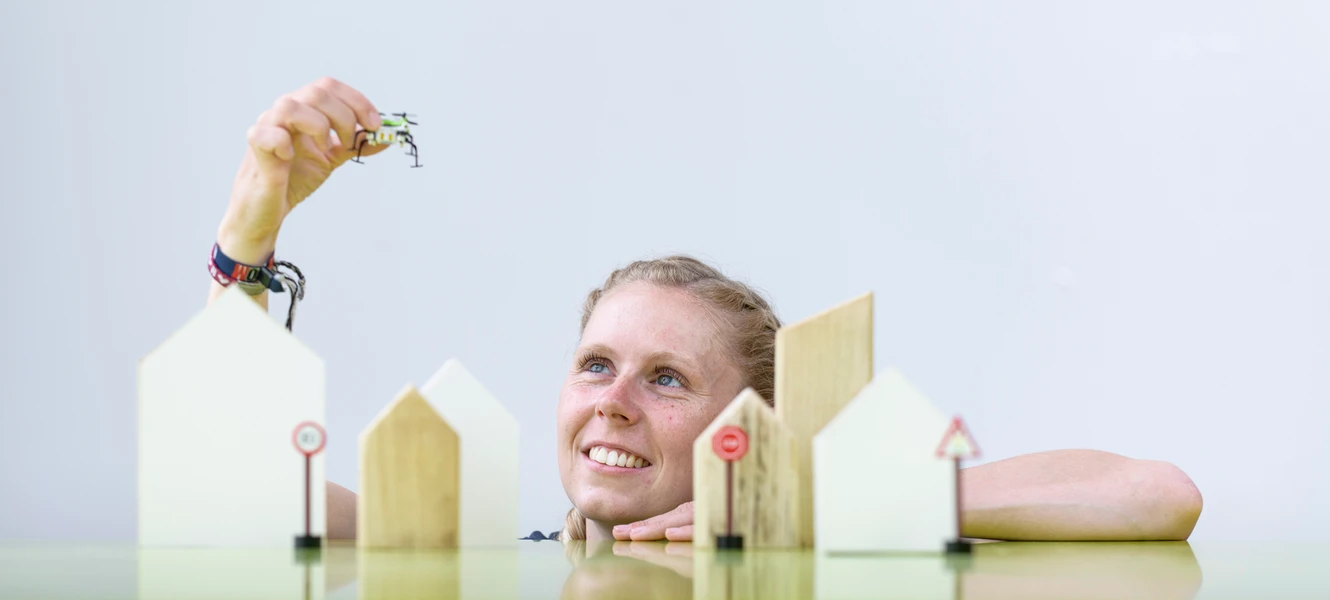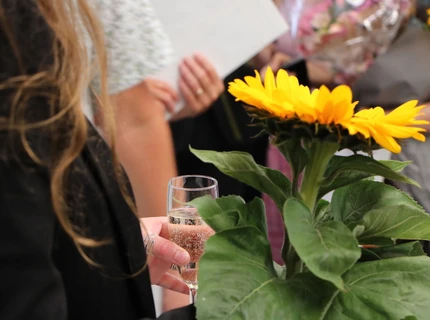
Racing Drones over the mini town
SWOOOOMMMM… The drones are here to stay. We know the spinning, unmanned flying robots, outlined against a dystopian black sky, from the big screen. But the future is well under way, and the drones are already solving tasks today. With cameras and sensors, they fly across fields and transmit data, which makes it possible to fertilize plants exactly where it is needed. The police can monitor the traffic, foresters can keep track of the stock of game, and roofers can examine a roof construction close up with a small camera without having to balance on tall ladders. And who knows – maybe the future steaming hot pizza or the groceries you order online will be delivered on your doorstep by a drone. Drones allow us to see the world from an entirely new perspective.
Small drones – big commotion
Ann-Kathrin Scholtyssek is among those who prefer to see the drone from below and with her own remote control in her hand. Besides an education as an engineer specializing in interaction design, a passion for triathlon and now a Master's degree in Design for Play from Kolding School of Design, she also knows how to fly a drone – only the small ones, mind you, and outside built-up areas, which requires only one drone authorisation. But for the big dudes, which can be the size of a dining table and are run by a diesel engine, one must have a specific drone certificate, which is the 'driving license' for drone pilots. Ann-Kathrin still needs to take additional flight lessons before receiving her certificate, but she has passed the theoretical portion of the mandatory course, which lasts three to four days, depending on which type of drone you want to fly.
But just as fun or exciting it is to fly a drone, just as boring is the type of instruction you must go through in order to qualify for a drone certificate. That’s what Ann-Kathrin discovered.
"It was three days of classical ‘sit-on-your-arse’ instruction, and a lot of PowerPoint presentations, fortunately presented by competent and enthusiastic teachers, but not particularly engaging. And nothing to stimulate the senses,” she says.
This caught the attention of the now Master’s graduate in Design for Play, who therefore designed an alternative course for future drone pilots.
Should we play at learning?
"In order to ensure maximum safety, it is particularly important to control how the drone flies over populated areas – how about distances, and how far does a security zone stretch? That can be very difficult to assess. Therefore, I have built a mini town that you can fly over with a small drone model on a stick, and also installed a wind machine to simulate windy weather of different strengths. While flying the model around, the pilot draws different playing cards with instructions, exercises or questions. For example, whether it's okay to fly over a garden and film a bunch of girls – a question that most people can probably answer correctly,” she chuckles.
But how do grown-ups feel about going into play mode? And what is it that play can do?
“My work is based on what is called ‘guided play’, which maintains that you learn and experience much more if you are allowed to explore things yourself – and that applies to grown-ups as well as children. Imagine you receive an instruction to do something. Fine. But then you have only one option, and that restricts your learning. If you are allowed to play and investigate at the same time, then you learn much more about the options and the context, says Ann-Kathrin. “Most people actually love to play. But to be certain I tested whether my target group was ready to try something new. They were thrilled to be socially and physically active in connection with the instruction. So the door has opened for much better learning – and eventually some super safe drone pilots!”
Collaboration partner: Integra Aviation Academy
“Ann-Kathrin Scholtyssek is one of the first graduates from the programme Design for Play from Kolding School of Design. The programme, which was developed in close collaboration with the LEGO Foundation and the LEGO Group, is the first Master’s programme in the world that is focussed on design and play. One of the main topics of research is how play can reinforce creativity, innovation and learning.”


